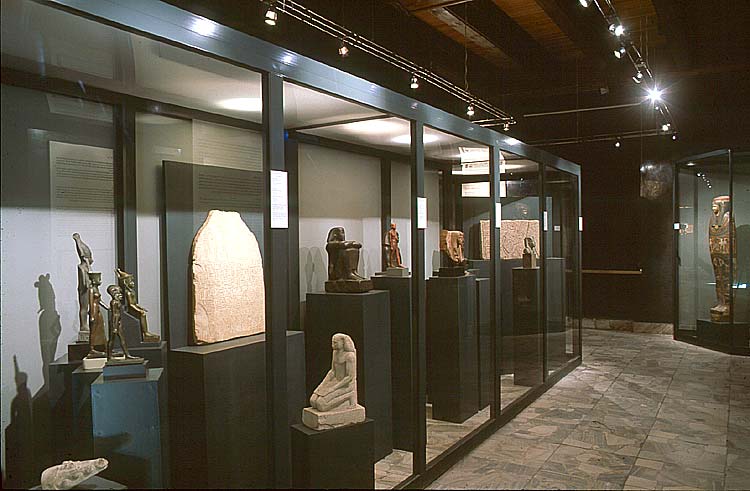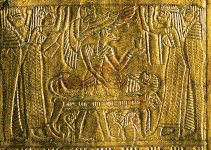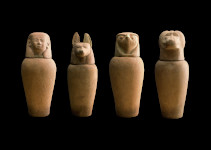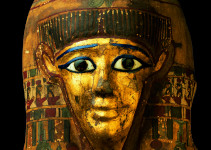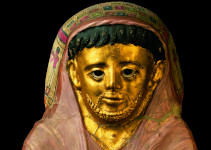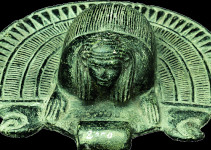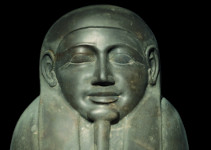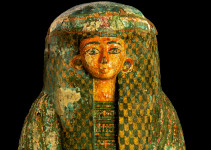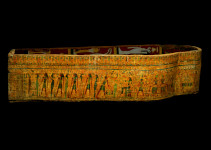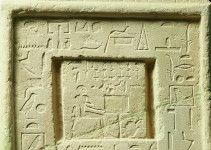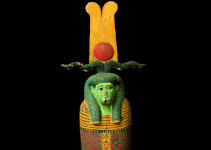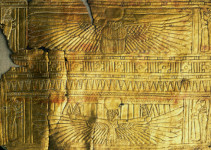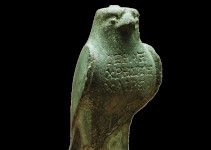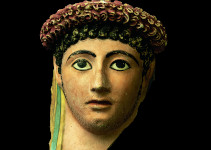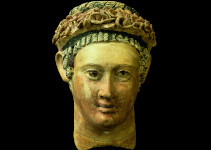Exhibitions
Departments
This section of the exhibition focuses on the beliefs in the afterlife and on funerary rites of the Egyptians. Preparations of the ‘house of eternity’, a carefully arranged and furnished tomb, were a condition for a proper life after death. The tomb was preferably hewn in the rock or built of stone, or at least furnished in stone elements like a so-called false door that enabled the spirit of the dead to go out of the tomb into the world of living, or an offering table, where the offerings for the dead were placed. The material ‘seat’ of the dead person’s soul was the mummy, a properly prepared body. The mummification process was conducted by Anubis, the god and custodian of the necropolis and ‘the guide of souls’. During the embalming the intestines were taken out of the body and preserved in so-called canopic vessels. The mummy, provided with a funerary mask, was placed in a stone coffin (a sarcophagus) , a wooden one or a cartonnage, with added amulets and papyri supposed to enable the difficult journey to the world of the dead. The funerary equipment included the ushebti figurines, expected to help the dead in their work in the next world.
| <<Religion and gods |
Writing>> |
Nasza strona internetowa używa plików cookies (tzw. ciasteczka) w celach statystycznych, reklamowych oraz funkcjonalnych. Dzięki nim możemy indywidualnie dostosować stronę do twoich potrzeb. Każdy może zaakceptować pliki cookies albo ma możliwość wyłączenia ich w przeglądarce, dzięki czemu nie będą zbierane żadne informacje. Dowiedz się więcej jak je wyłączyć. OK, Rozumiem


